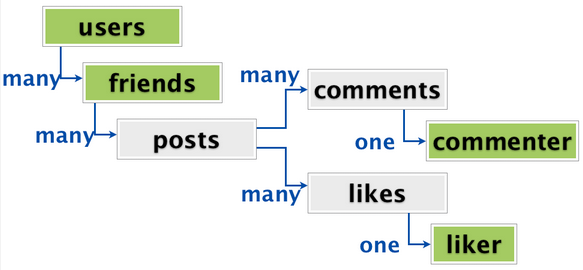MySQL vs. MongoDB: The Pros and Cons When Building a Social Network
When building a social network, it's important to think over the benefits and drawbacks of the major database types.
Join the DZone community and get the full member experience.
Join For FreeChoosing the right database for a project is an extremely important step in planning and development. Picking the wrong setup can cost quite a bit of time and money, and can leave you with numerous upset users in the process. Both MongoDB and MySQL are excellent databases when used in their expected ways, but which one is better for building a social network?
What is MongoDB?
MongoDB is a NoSQL database, which means that related data gets stored in single documents for fast retrieval. This is often a good model for when data won't need to be duplicated in multiple documents (which can cause inconsistencies).

An example of a MongoDB document. Source: MongoDB.
MongoDB is easily scalable in such cases, so the database can have rapid horizontal growth while automatically keeping things in order. This can be especially good when you have large amounts of data and need a quick response time.
What is MySQL?
MySQL is a relational database, which means that data gets stored (preferably) in normalized tables so that there is no duplication. This is a good model when you need data to be consistent and reliable at all times (such as personal information or financial data).

An example of a MySQL table. Source: MySQL.
While horizontal scaling can be more difficult, it does adhere to the ACID model (atomicity, consistency, isolation, durability), which means you have far fewer worries about data reliability.
How Does Social Networking Work?
Social networks offer different ways for people to connect. Whether it is through a mutual friendship, a business associate, or following a well-known person or business for updates, there are numerous methods of getting information out over social networks.
The key ingredient is in the connections: for anyone a user is connected with or following, that person will typically see the updates from all of those connections once logged in to the system.

An example social network relationship diagram. Source: SarahMei.com.
Comparison of the Databases
Given that social data has various relations, to users in particular, it lends better to a relational database over time. Even though a NoSQL solution like MongoDB can seem like a great way to retrieve lots of data quickly, the relational nature of users in a social network can cause lots of duplication to occur.
Such duplication lends itself to data becoming inconsistent and/or unreliable over time, or to queries becoming much more difficult to handle if the duplication is removed (since documents will likely need to point to other documents, which is not optimal for a NoSQL type of database).
As a result, MySQL would be the better recommendation because it will have the data reliability and relational tools necessary to handle the interactions and relationships among numerous users. You may also decide to use both MySQL and MongDB together to utilize the best features of each database.
Whether you decide to use one or both databases, Morpheus seamlessly provisions and manages both SQL and NoSQL databases across private and public (or even hybrid) clouds. With its easy to use interface, you can have a new instance of a database up and running in seconds.
Visit the Morpheus site to create a free account or to sign up for a demo today!
Published at DZone with permission of Darren Perucci, DZone MVB. See the original article here.
Opinions expressed by DZone contributors are their own.

Comments